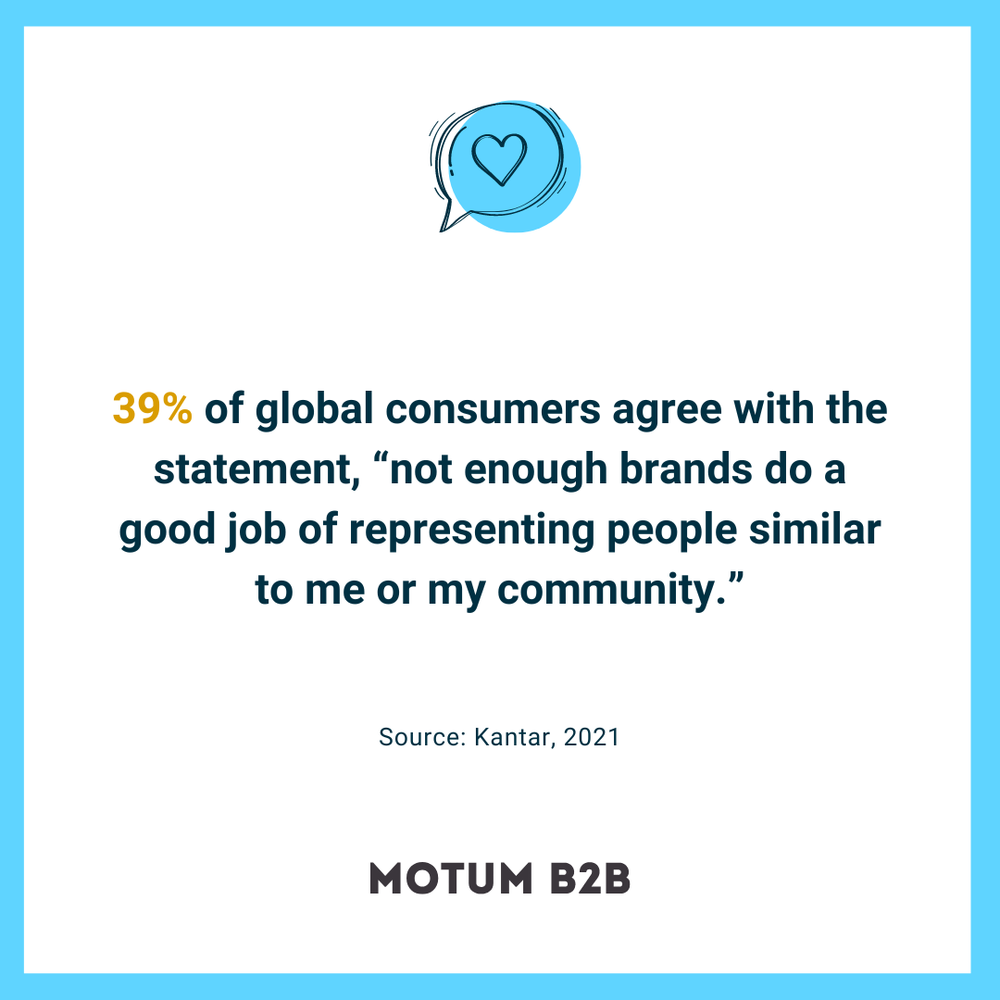5 questions to ask yourself when using stock libraries
B2B businesses are spoiled for choice when it comes to images and videos, but what should they ask themselves to ensure they find quality in all that quantity?

From Adobe Stock to Shutterstock, iStock to Getty Images, it’s never been easier for a B2B brand to access images or videos for content, websites, and other marketing materials. However, the process isn’t as simple as going with the first thing you see.
To ensure you’re choosing visuals that are best for your brand, we put together five questions to ask yourself before clicking the download button.
Does it look like a stock image?
From hands typing to people laughing in board rooms, stock imagery comes with a lot of clichés. Back in 2015, it became such a talking point that the absurd ‘woman laughing with salad’ stock image trope was turned into a play.
Images play an important part in building personality, tone, and creating a good first impression across all the channels you’re active on. Choosing images that don’t look like stock images means your brand won’t look generic and will be more memorable. To do so, don’t be afraid to think outside the box. Perhaps a blog could be visualized more conceptually, or you can look to create a mood or feeling rather than literally illustrating what the article talks about.
As mentioned above, stock images offer a lot of freedom and should be edited and reworked. Typically, a license will allow you to change the original to fit your needs.

Does it depict your industry accurately?
Typically, a B2B brand serves a small and specific market, offering a solution to a buyer who will be well-versed in their field. As a result, you should make sure your stock imagery is accurate.
For example, if you need a photo of a manufacturing environment, is everyone in the image wearing the right type of safety equipment? If you’ve selected an image of someone working in a laboratory, are the right tools on display in the background? If you’re choosing images with writing, pin boards, or printouts, what do those include?
In the same way you’d fact-check a blog feature, it’s important to give your images a quality check too. You could also, following on from the point above, have a designer edit images to include your products or more relevant equipment.
Is there enough diversity?
While recent years have seen progress with diversity and inclusivity in marketing, there’s still more to be done.
In 2021, Kantar’s Global Monitor found that 39% of global consumers agree with the statement, “not enough brands do a good job of representing people similar to me or my community,” and a 2024 report from the Association of National Advertisers found that the advertising and marketing industry took a step backwards last year, with overall ethnic skew falling from 32.3% in 2022 to 30.8% in 2023.
Whether it’s a B2C or B2B organization, being a brand comes with responsibility. Promoting diversity is part of that. When choosing stock images, keep the above in mind, explore platforms like Nappy and pocstock which are dedicated to offering diverse stock imagery, and ensure your campaigns reflect the real world.
 Men laughing in board rooms. A certified stock cliché?
Men laughing in board rooms. A certified stock cliché?
Does it encapsulate your brand?
It’s likely your brand has a visual identity or guidelines that act as a source of truth on how your organization treats logos, images, fonts, and other visual elements. When choosing stock images, you’ll want to find results that fit those guidelines and tick every box.
As we noted in our blog post on choosing the right images for your brand, there are ways to make that process easier. That can include filtering search results by colour and tone or completing exercises to better understand your brand’s personality.
It’s also important to remember that visuals from stock libraries don’t have to be used as is. You should take extra steps to edit images and create something that better aligns with what you want, such as editing colours to match your brand palette or creating branded templates with your logo.
What’s the role of AI?
The conversation around AI is constantly evolving, so it’s important to take time to familiarize yourself with what’s happening.
For example, in 2022, Getty Images banned all AI-generated content following worries about future copyright claims. However, in January of this year, it announced the launch of Generative AI by iStock, “an affordable and commercially safe generative AI tool to help users and businesses easily turn their creative visions into powerful content.”
We’ve talked at length about the risks of using AI in B2B content marketing and how B2B marketers can build AI literacy.
How you use AI is up to you, but research if something has been created by a machine. Then, if it has, you can choose to switch it out for something human-made, make readers aware in the caption, or approach it so it sits in line with your company’s AI policy.